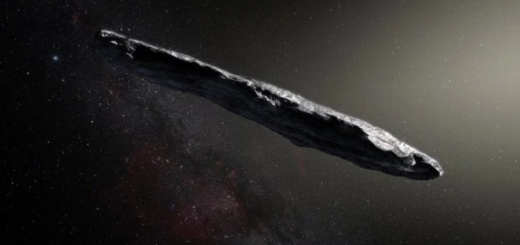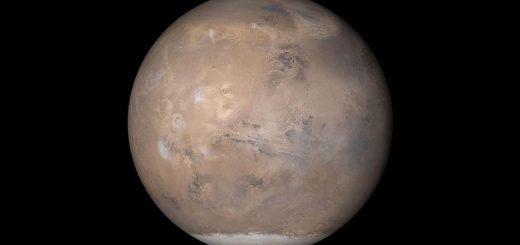August meteorite likely fell near Camrose, say scientists hunting for space rock

Scientists are still searching for meteorites from a fireball that lit up Edmonton skies last month and after further analysis, they have narrowed down the possible landing zone to a strip of land between Camrose and the Battle River.
The fireball was spotted streaking across the sky the evening of Saturday, Aug. 31 around 10:30 p.m., with many homeowners discovering it via their doorbell cameras.
READ MORE: Videos capture bright object streaking across Alberta skyline
At first it was thought to have broke up near New Sarepta, but new data puts the landing zone about 40 kilometres south.
Researchers at Curtin University in Perth, Australia, as part of the Global Fireball Observatory, triangulated the meteor‘s path using using data from a University of Alberta all sky network camera at Lakeland College with an image from photographer Shane Turgeon.
Turgeon said he captured the meteorite when he was north of Edmonton near Westlock, photographing the northern lights and something known as STEVE (Strong Thermal Emission Velocity Enhancement): an atmospheric optical phenomenon that appears as a purple and green light ribbon in the sky.
Alberta photographer Shane Turgeon, who was out photographing northern lights near Westlock, captured the meteor streaking across the sky on Saturday, Aug. 31, 2019.
Alberta photographer Shane Turgeon, who was out photographing northern lights near Westlock, captured the meteor streaking across the sky on Saturday, Aug. 31, 2019.
That data was backed up by other photos from the public-scientists, allowing researchers to “verified with almost pinpoint accuracy” the trajectory of the fireball and possible area the meteorites may have landed.
The fireball ended 20 kilometres above Camrose, which the University of Alberta said explains some reports of a sonic boom by area residents.
But in spite of hours of exhaustive searching in the fall zone just south of Camrose, the U of A said no meteorites have yet to be found.
“While we haven’t found any meteorites yet, we are confident that they are out there,” said Chris Herd, a professor with the University of Alberta Faculty of Earth and Atmospheric Sciences and curator of the U of A Meteorite Collection.
READ MORE: Space rocks from 1960 Bruderheim Meteorite help usher in new age of geology
Herd said it’s estimated only about one kilogram of meteorite material actually reached the ground, with the rest burning up on the way down from space.
“But it might be hiding in farmers fields, which we cannot get to yet,” Herd said, adding harvesting of crops is delayed this year because of the wet summer so it could be a few weeks before a more in-depth search can take place.
Before you set off on a space rock search of your own, there’s a few things to know: meteorites on private land belong to the landowner, but any meteorites found on public right of ways – such as along roads – belong to the finder.
Regardless of who finds the meteorite or meteorites, University of Alberta researchers are keen to study them.
“Every newly fallen meteorite is like a spacecraft bringing a sample back from an asteroid or another planet. It’s a chance to study a nearly pristine sample from space,” Herd said.
READ MORE: Dash-cam video shot in Edmonton area captures strange bright light falling from sky
Meteorites are a lot more rare than you might think, according to the U of A, who said people may find neat-looking porous rocks and assume they have found a meteorite, but often they’ve found slag, chert, or pyrite.
Here’s four ways to identify a meteorite:
Check if the specimen feels unusually heavy for its size. Many meteorites (typically iron meteorites) are quite dense and feel heavier than most Earth rocks.
Test the specimen’s magnetism using a standard fridge magnet. Nearly all meteorites contain iron-nickel metal and attract magnets easily.
Check for holes or bubbles in the specimen. A true meteorite will not have any holes or bubbles at all. If your specimen does, it’s likely slag or some other stony matter.
Examine the outer-layer of the specimen for a thin, black, eggshell-like crust. When a meteor falls through Earth’s atmosphere, the outer surface of the rock melts, forming what’s known as a fusion crust.



 Creators of mankind
Creators of mankind Description of “Tall white aliens”
Description of “Tall white aliens” Where they came from?
Where they came from? About hostile civilizations
About hostile civilizations The war for the Earth
The war for the Earth “Tall white aliens” about eternal life
“Tall white aliens” about eternal life Video: “Nordic aliens”
Video: “Nordic aliens” Aliens
Aliens Alien encounters
Alien encounters The aliens base
The aliens base UFO
UFO Technology UFO
Technology UFO Underground civilization
Underground civilization Ancient alien artifacts
Ancient alien artifacts Military and UFO
Military and UFO Mysteries and hypotheses
Mysteries and hypotheses Scientific facts
Scientific facts


















